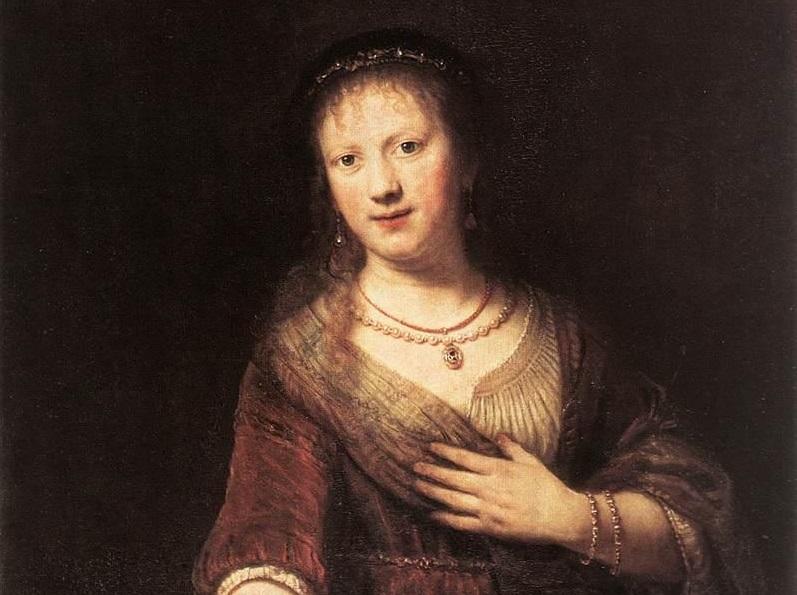Rembrandt sketched, drew, and painted his beloved wife, Saskia, throughout their marriage—in sickness and in health, right until her death parted them. He depicted her in every way he could. In his artworks, we see Saskia the woman, wife, mother, and muse. We see her disheveled upon waking; laughing with her husband; and as majestic Minerva, the ancient Roman goddess of wisdom, to name a few depictions.
Rembrandt’s three paintings of Saskia as Flora, the ancient Roman goddess of spring and fertility, reflect the seasons of Rembrandt’s marriage and the transience of life—from the first buds of their honeymoon to her blossoming pregnancy and to her untimely death.






